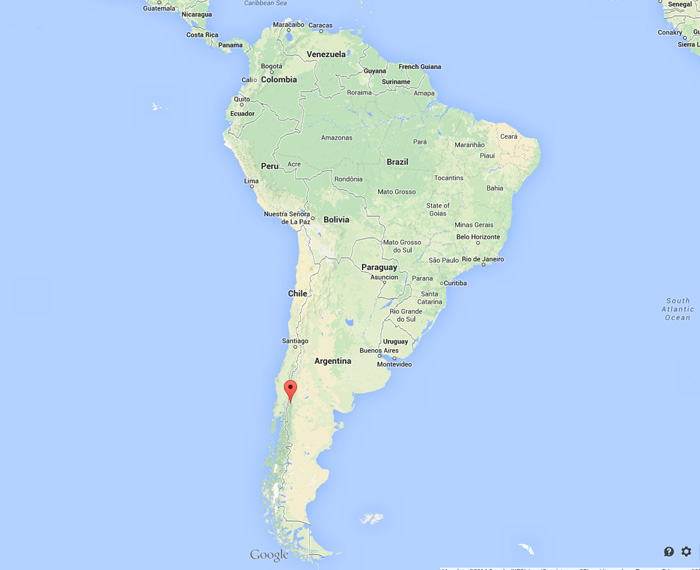Few today have heard of Esteco. The records tell us that the first colony of that name was built on the western banks of the Pasaje river, some eight leagues to the south of El Quebrachal, in the province of Salta. When the city of Talavera was founded in 1567 the people of the earlier settlement re-established themselves there, giving it the name of Esteco Nueva, or New Esteco. It is to this second city that our tale relates.
The city of Esteco soon became the pride of northern Argentina; rich and powerful, and set in the most beautiful surroundings imaginable. Succulent fruit sprang from its fertile soil, to be eaten off the finest gold and silver plate. But all was not well. Scornful of outsiders, its citizens competed with each other in their ostentatious behaviour and their dedication to the pleasures of life, while slaves and beggars – for this was a long time ago – were treated with contempt and a total disregard for even the most basic human rights and dignity.
Over the years, Esteco grew increasingly decadent. The bells in the church towers tolled each morning in vain, for who, after a night’s wanton debauchery, would get up early for mass? Far better to lie abed until the cool of the late afternoon and then stroll through the Esteco streets, bejewelled and bedecked with their latest finery, all a flutter of furs, lace and pearls. It would all too soon be time for another night’s revels to begin. The churches were as empty as the minds of the citizens, but while behind the church doors all was peace and tranquillity, the halls of the city resounded with shouts and cries of dissolute abandon.
Years passed, and the Eighteenth Century dawned. One sultry evening, an elderly and infirm missionary arrived in Esteco, drawn by the infamy of this vain and vacuous place. Weak from his long and arduous journey and with the dust of his travels still clinging to his clothes the frail old man shuffled from door to door in the habit of a mendicant friar. Unsurprisingly, every door slammed shut in his face, to the accompaniment of cruel and uncivil remarks.
But the old man was determined to continue, to see whether there might not be one charitable soul, one glimmer of hope in this den of iniquity. Slowly, with increasing hunger but indefatigable purpose, he continued in his rounds. And at last he was rewarded. Right on the eastern edge of the city a woman who lived alone with her infant son invited him in to her humble home, where she sacrificed her last remaining hen to provide food for the elderly traveller.
Fired by the woman’s compassion, and perhaps also fuelled by the sustenance she had provided, Father Bárzana – for it was he – harangued the people of the town from the market place, from the street corners, from the entrances and pulpits of the empty churches, entreating them to return to the ways of Christianity. But his words continued to fall on stony ground.
Preaching in the market place, the friar told the people of Esteco that their city would soon be destroyed by an earthquake and that this would be a punishment for their unholy life and their unwillingness to repent. His warning was greeted with derisory laughs and from that moment on his life became unbearable. Wherever he went, people would jeer and joke about the end of the world. There was even a spate of ‘earthquake’ parties, at which the revellers made fun of him and his faith.
Finally, the old man realised that there was nothing more he could do. He went to the house of the poor woman who had helped him and ordered her to leave her house before dawn on the following day, taking her son with her. Before the sun was high in the sky she would hear the most terrible sounds; the sky would turn red, the earth would crack open and the city of Esteco would be swallowed up for eternity. Provided she did not look back, she and her son would be safe. But if she succumbed to curiosity they would also be punished.
The woman heeded the friar’s warning, and before the sun arose she was well on her way with her son bundled up in her arms. After a few hours on the road, just as the old man had told her, she watched the sky turn crimson and heard behind her the thunder of buildings crashing to the ground, the furious roar of flames and the crack of the earth itself splitting wide open.
Such was the ferocity of the holocaust that she could soon feel the heat of the fire on her back and through the deafening blast could clearly make out the shrieks and screams of the dying citizens of Esteco as they tried in vain to escape their destiny. Distracted by terror and the very real fear that she and her son might yet fail to escape the fate of her fellow citizens she let her curiosity get the better of her and, momentarily forgetting the warning of Father Bárzana, turned to contemplate the devastation of what had once been the city of Esteco.
As she turned, infant son in her arms, she froze on the spot, instantly transformed to solid stone. And there she stands to this day, in the shape of a massive rock structure that requires little imagination to discern the forms of the mother and her babe in arms. Recognisable from afar by all travellers in the area, there are those who say that every year she takes one step further in the direction of Salta, the city to which she was fleeing when she so unwisely looked back.
As for the city of Esteco and its inhabitants, destroyed by earthquake in 1692, nothing remains but this tale.
